A Modern Classic - The Prologue VCF
In 2018 Korg released, somewhat unexpectedly, an analogue/hybrid polyphonic synthesizer in 8 and 16-voice variants called the Prologue.This was special on many counts, among these we may cite
- It has three oscillators, two VCOs and a digital oscillator (the multiengine, ME). At the time, this was only the second 16V analogue synthesizer with VCOs ever made into mass production (the other one was Alesis’ Andromeda from the early 2000s).
- The ME was programmable and an SDK was made available for anyone to do it.
- It had a digital effects section that was also programmable.
It suffered from the design decision of putting the full analogue signal through an ADC/DAC to implement the digital effects with no true analogue route to the output.
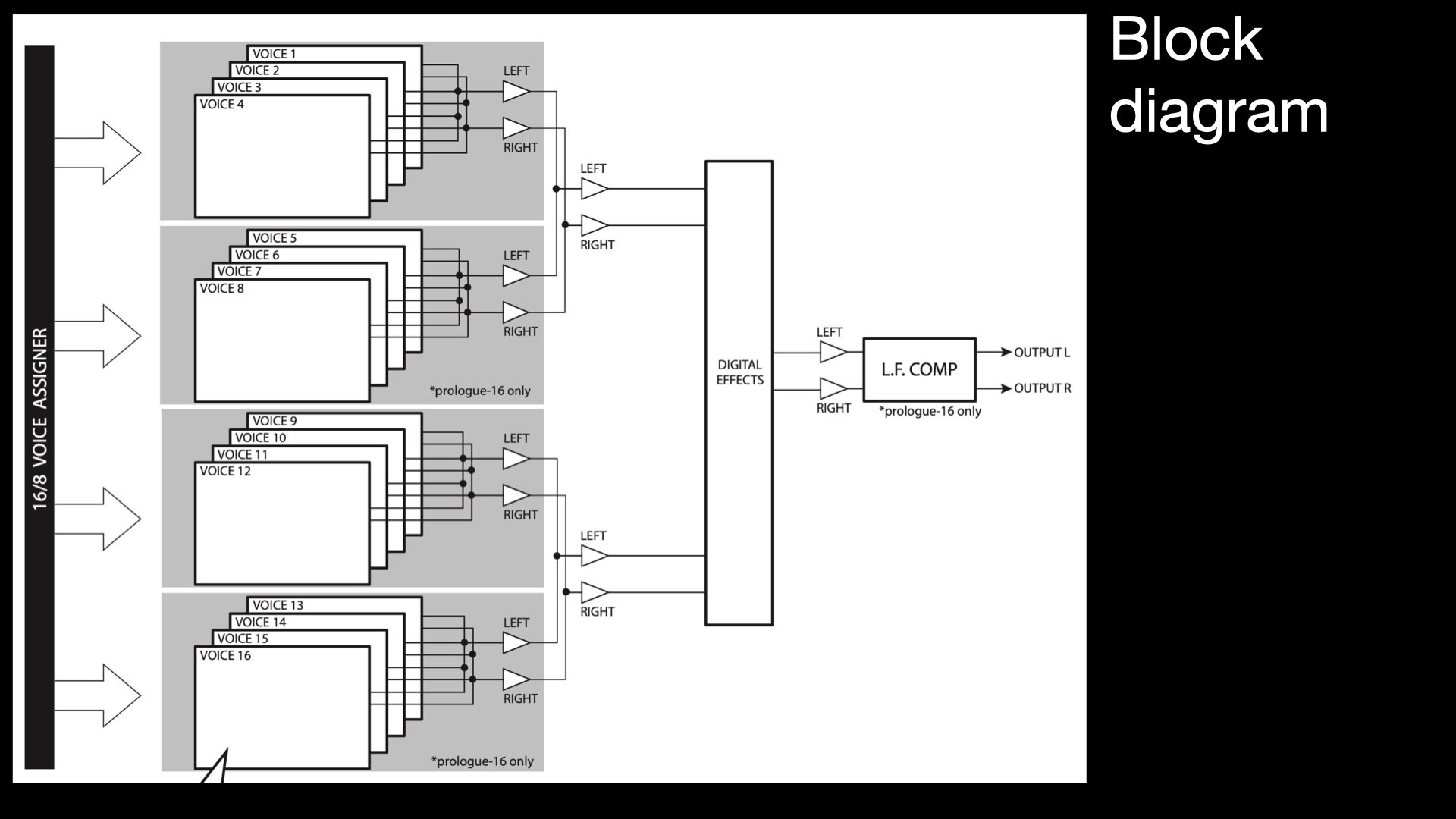
Interestingly enough, an examination of the service manual documents shows that at some point an effects bypass was present in the design, but that seems to have been removed later on.
The prologue also had some limitations in terms of modulation with only one LFO per voice.
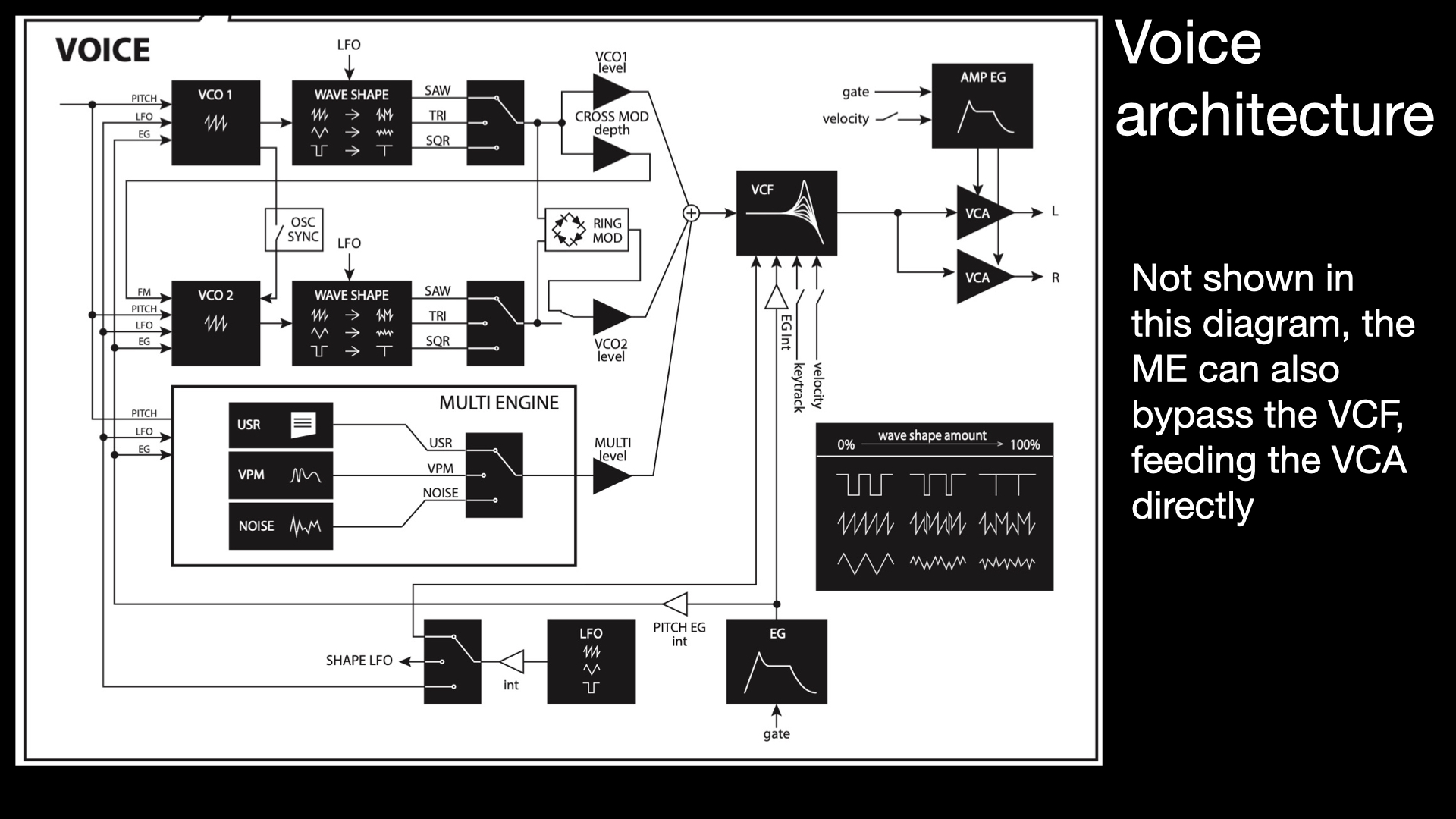
However that was also the case of many classic VCO polysynths.
The Prologue now seems to be discontinued and it is slowly turning into a highly desirable instrument. Some of its character has to be attributed to the VCF it employs. This appears to be a novel origin design (I have not seen anything similar yet), contrary to the other logue-line synths, which use more conventional 4-pole lowpass types.
The VCF circuit
The Prologue VCF is advertised as a 2-pole lowpass filter, and as we are accustomed to see these tend to be of the state-variable type. A look at the circuit diagram makes us believe that, since we can find a couple of integrators following VC gain units.
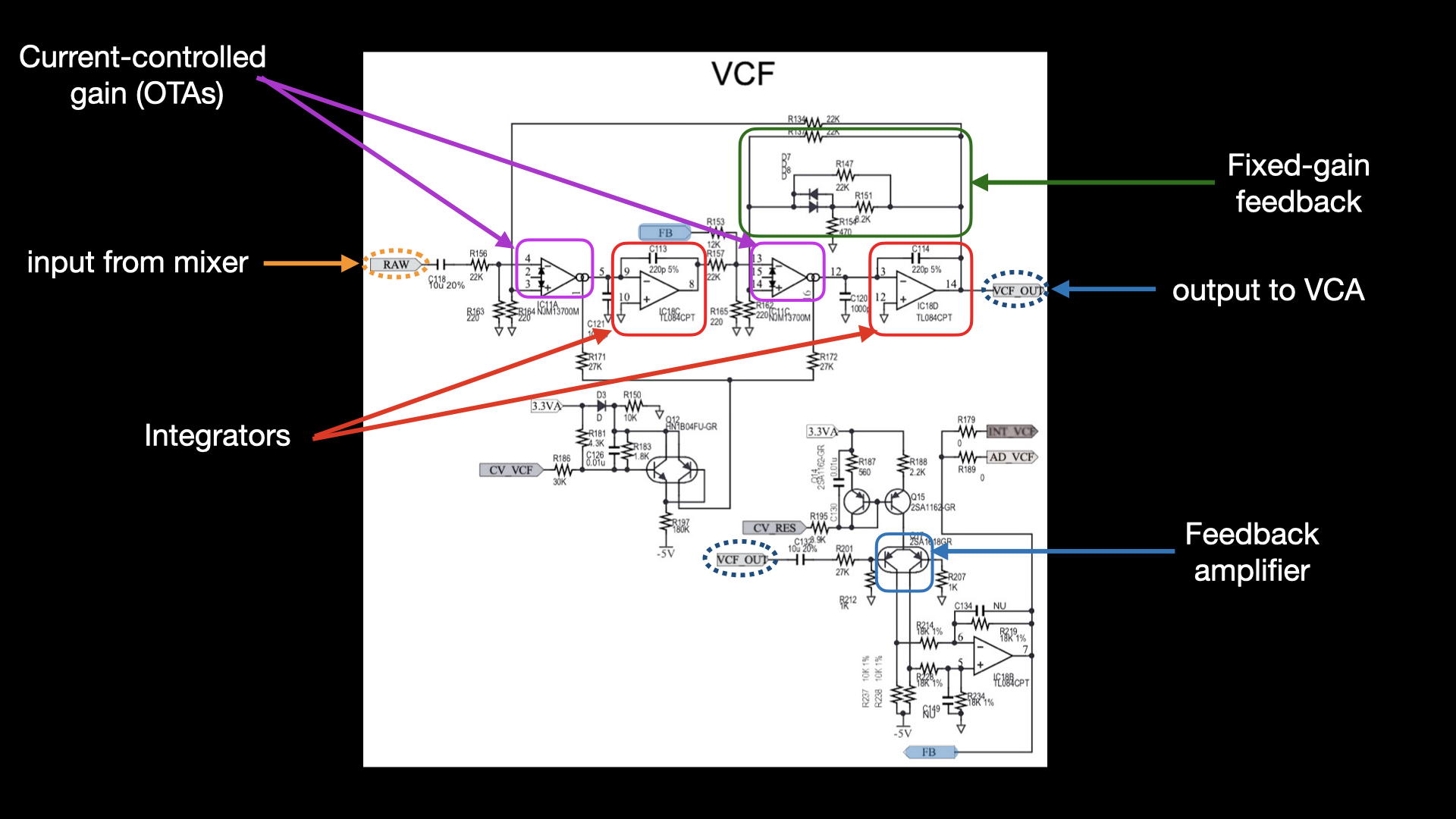
However, if we draw a flowchart from this, we will see that the damping feedback control is not placed in the usual location for a state variable. Let’s recall the classic state variable design,

We can see, the feedback path runs from the first integrator back to the input. Here in the Prologue VCF, it runs from the output to before the second gain unit,
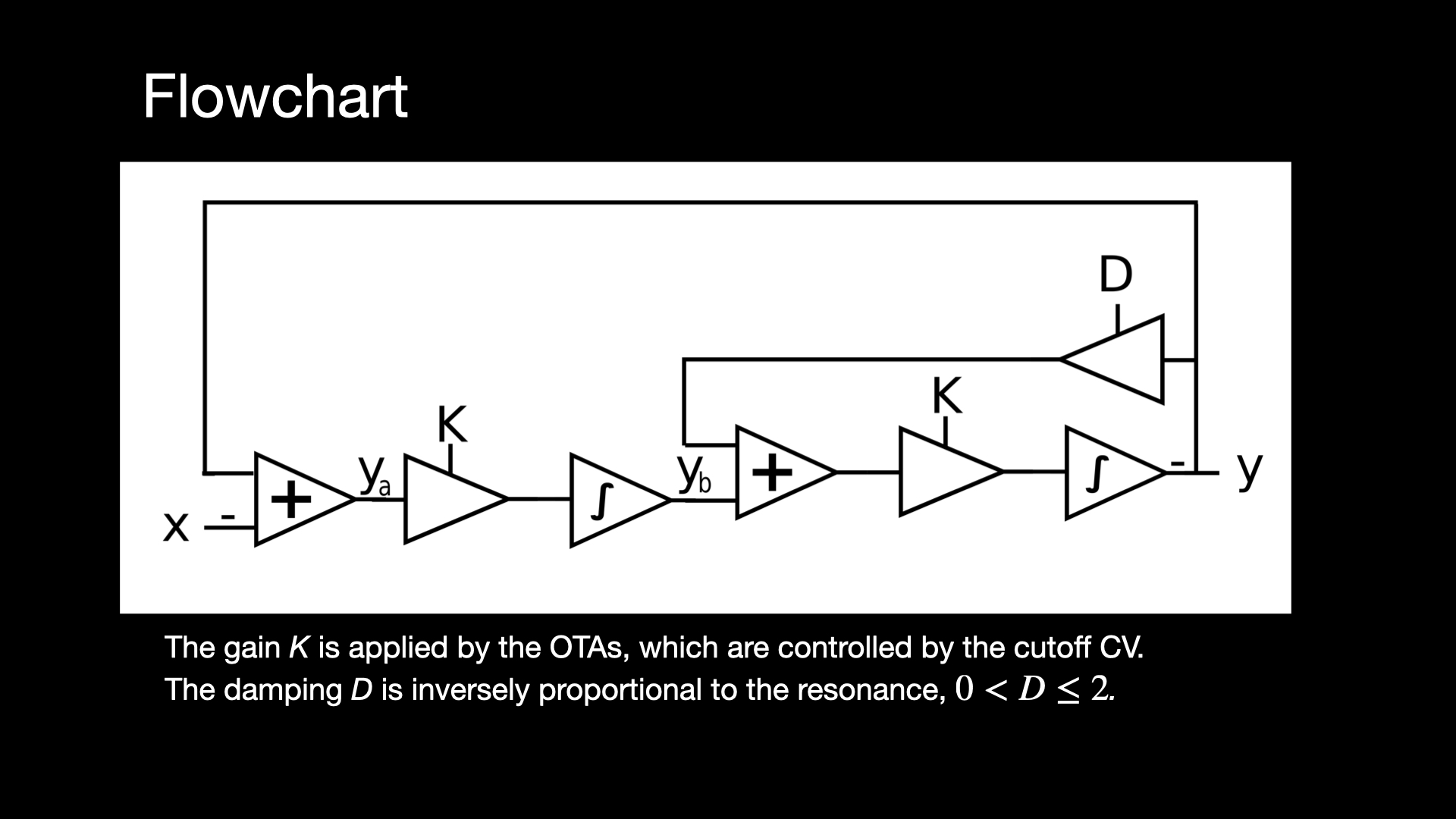
A close analysis shows that this is still equivalent to a state-variable lowpass, but it results in a reversed-polarity output. It is of course the case that the topology of the state variable filter can be tweaked to get some variants, and this confirms that. Interestingly enough, it is possible to extract high-pass and band-pass outputs from this filter (at the ya and yb points, respectively), but this is not realised in the synthesizer.
The Prologue allows the ME signal to bypass the filter, so we can test this conclusion. Plotting the VCF input and
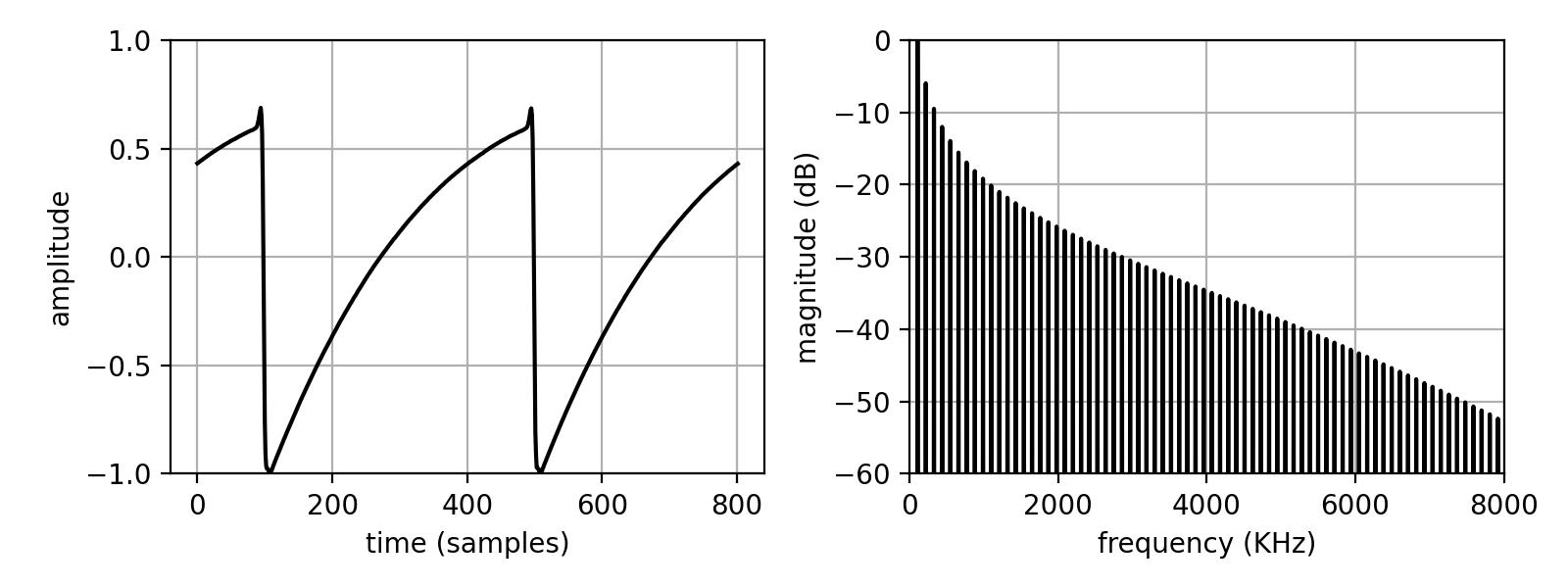
output
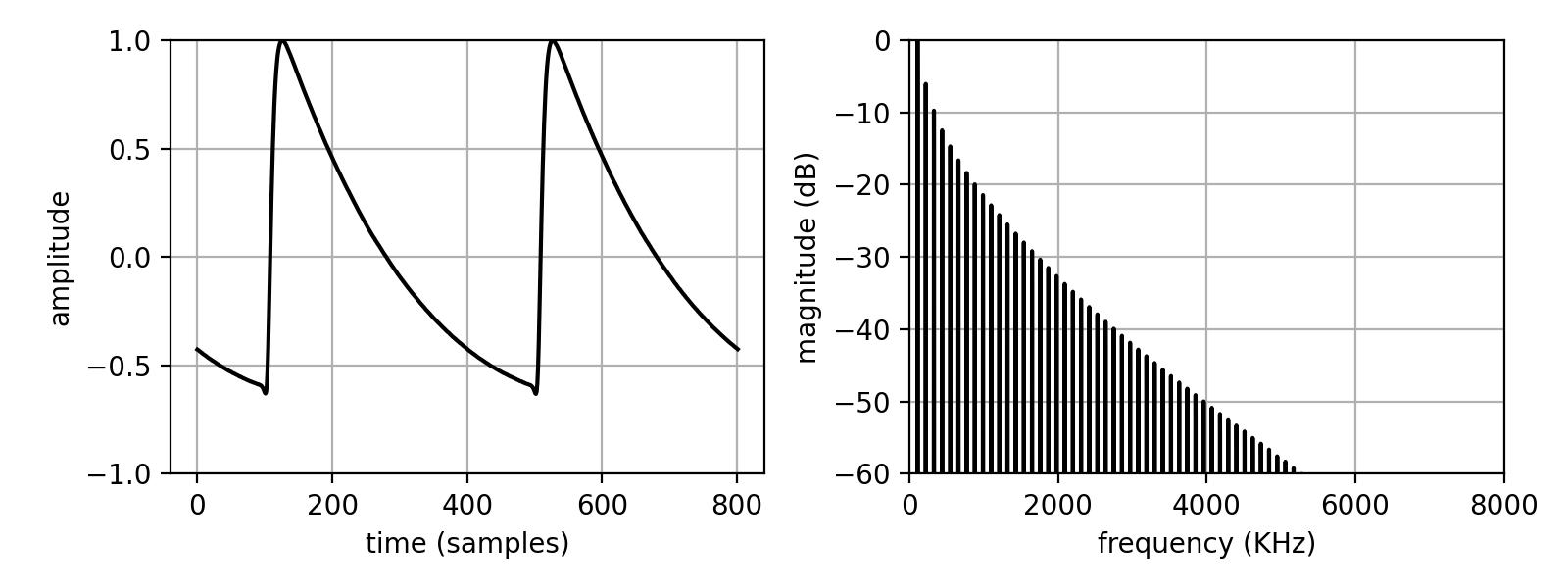
confirms this.
Another interesting thing about the VCF circuit is that the feedback path is split into two: “fixed gain” and a voltage control variable-gain route. The former sets the minimum Q to 0.5 (or damping = 2), and the latter increases it. It does that by pushing more signal in an opposite polarity to the fixed route, therefore reducing the damping (and increasing resonance).
Non-linearities
The Prologue is anecdotically known for its grit with high-resonance settings. We should anticipate that this results from filter non-linearities introduced by the CA3080 OTAs, which provide the CV gain responsible for setting the cutoff frequency, and the differential amplifier used to control the damping feedback level and the resonance amount. A separate source of non-linearity is the double-back diodes in the “fixed” feedback route. This makes the gain in that path actually dependent on the signal level. They work together as an expander, increasing the damping if the voltage goes beyond a certain threshold.
We can clearly see these non-linearities having an effect on the synthesizer output, for resonance levels above 50%,
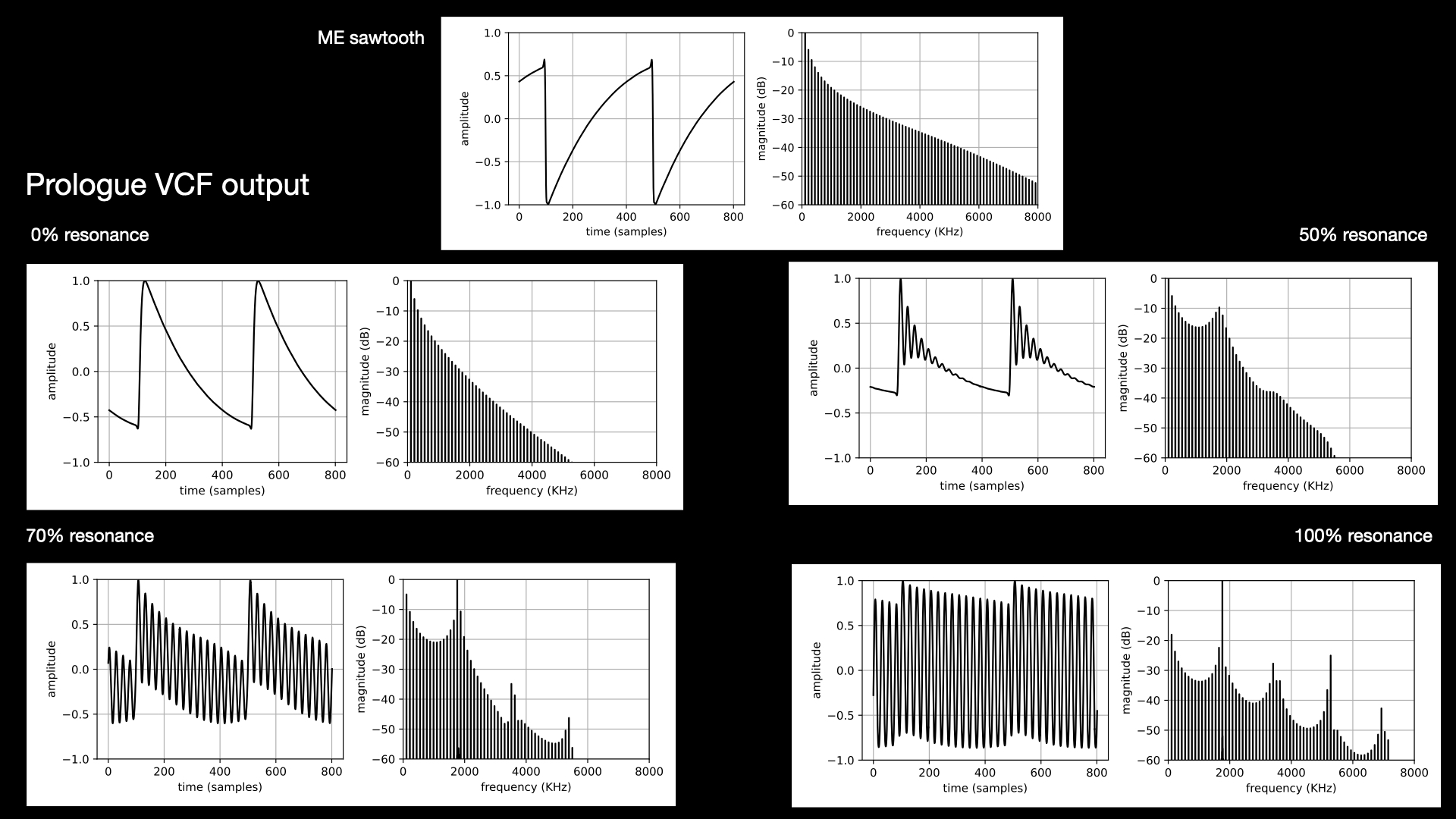
As we can observe, a number of subsidiary peaks at multiples of the filter frequency are present. In a linear 2-pole filter we should only see one peak, but in this case, the filter is actually working as a waveshaper, adding components to the spectrum.
The Prologue VCF is a very interesting filter and it really makes the synthesizer produce tones that are different from other such instruments. Together with other distinguishing features, it turns this synth into a real modern classic.